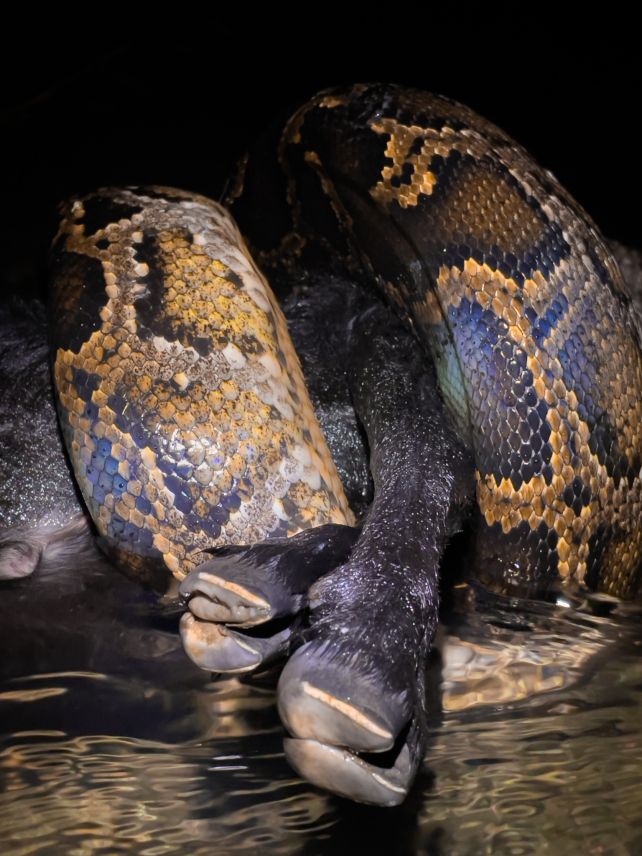When carnivores that roam our Earth feast gleefully on the flesh of their prey, the hard, unpalatable bones are usually left behind.
But snakes can unhinge their jaws to swallow their meals whole – and, unlike other animals that pass or regurgitate the bones they cannot break down, the skeletons swallowed by snakes do not re-emerge in a recognizable format.
Exactly how snake bodies pull off this astonishing feat of bone digestion has been unclear. Now, scientists have found a previously unknown type of cell in the intestines of Burmese pythons (Python molurus bivittatus) that appears to enable them to completely and utterly absorb the skeletons of their prey.
These cells help process large amounts of calcium and phosphorus that would otherwise overload the snake's system.
Related: Scientists Just Discovered a New Cell. It Was Predicted 100 Years Ago
"A morphological analysis of the python epithelium revealed specific particles that I'd never seen in other vertebrates," says biologist Jehan-Hervé Lignot of the University of Montpellier in France. "Unlike normal absorbing enterocytes, these cells are very narrow, have short microvilli, and have an apical fold that forms a crypt."

Only a few animal species have been observed deliberately eating bones, a practice known as osteophagy. It's usually associated with the intake of phosphorus and calcium. Indeed, pet snakes that are only fed boneless food develop calcium deficiencies, so skeletons in fact appear to be a vital component of snakes' overall diet.
But if calcium uptake wasn't limited, snake bloodstreams could be overloaded. "We wanted to identify how they were able to process and limit this huge absorption of calcium through the intestinal wall," Lignot explains.
The researchers used light and electron microscopy to study the enterocytes, cells lining the intestines, of Burmese pythons. They also took blood hormone and calcium measurements from snakes that were either fasting, fed normal prey, or fed boneless rats.
The results revealed a specialized cell type that enables the snake to process and metabolize bones.

"These cells have an apical crypt possessing a multi-layered particle made of calcium, phosphorus, and iron-rich nucleation elements in the centre," the researchers write in their paper.
"In fasting snakes, this cell type has empty crypts. When snakes are fed with boneless prey, particles are not produced by this cell type, although iron elements are located within the crypts. When calcium supplements are added to a boneless meal, large particles fill the crypts."
In addition, no bones or bone fragments were found in the feces of the pythons, suggesting that the skeletons of their prey are completely digested.
The particles in the cells' crypts, the researchers determined, are excess to the snake's requirements once it has extracted all it needs from the completely dissolved bones. The purpose of the newfound cells seems to be to sequester and excrete the excess dissolved calcium and phosphorus.

In data that has not been published, the researchers identified the same cells in other reptiles: the common boa (Boa constrictor), green anaconda (Eunectes murinus), blood python (Python brongersmai), reticulated python (Malayopython reticulatus), Central African rock python (Python sebae), and carpet python (Morelia spilota).
The Gila monster (Heloderma suspectum), a lizard, also possesses the cells.
This suggests that the specialized cells may have evolved before the species diverged, or evolved multiple times in different animals. The researchers believe that other bone-eating animals that devour their prey whole may provide clues.
"Marine predators that eat bony fish or aquatic mammals must face the same problem," Lignot says. "Birds that eat mostly bones, such as the bearded vulture, would be fascinating candidates too."
The research has been published in the Journal of Experimental Biology and presented at the Society for Experimental Biology Annual Conference in Belgium
